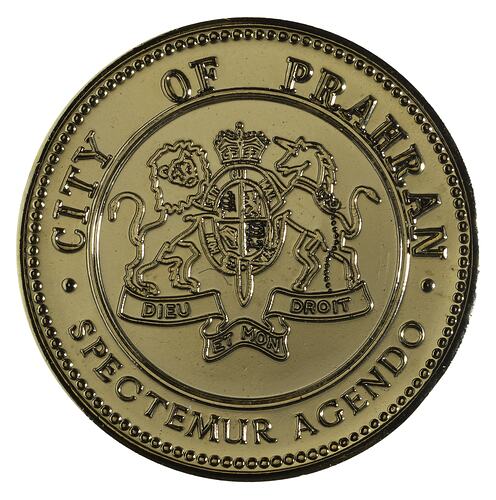Prahran is a suburb about 5 km south-east of Melbourne. Prahran's name evolved from 'purraran', apparently an Aboriginal word meaning 'almost surrounded by water', referring to the Yarra River and swamp to the south-west part (of which Albert Park Lake is a remnant). The area was called Prahran by Robert Hoddle, Government surveyor, in 1840.
It was originally surveyed for farm allotments, with land sales in 1840 and 1849-50. The allotments attracted house construction - on large blocks in the north and east of the district, and on smaller, subdivided blocks in the south and west. Cottages on the smaller blocks accommodated gold rush immigrants, contrasting with grand residential houses on the larger blocks.
Between 1852 and 1854 four denominational schools were opened in the Prahran area.
In 1855 the Prahran municipal district was created, and 1 October 1963 Prahran became a borough. The Prahran municipal area came to include Prahran municipality, containing parts of South Yarra and Toorak and all of Armadale, Hawksburn and Windsor.
The Mechanics' Institute (forerunner of a technical college) was opened in 1864, and the Prahran market opened in the following year. In 1859-60 a railway line was constructed from Melbourne, through Prahran to Brighton. A second line branched from Windsor, west of Prahran, towards St. Kilda. During the 1870s the Prahran municipality's population grew by 50%. By 1879 a rail line from Melbourne to Gippsland also traversed Prahran, and when cable trams began to run in Toorak Road and Chapel Street in 1888 and 1891, Prahran became a public transport hub and a retail centre. Chapel Street became a principal shopping strip. Prahran's population doubled in the 1880s, reaching nearly 40,000 in 1890.
By the 1890s much of Prahran had been laid down in terms of utilities, commercial facilities and residential areas.
Chapel Street continued to develop as a sub-metropolitan shopping centre in the 1880s and again after the 1890s depression. Chain stores such as Foy and Gibsons (1902), Maples (1904), Treadways and London Stores opened. Charles Moore Read Co's emporium (1886) was enlarged in 1902. Food-processing and textile industries began to develop concurrently in the western part of Prahran, the best known of which were the Australian Jam Company (later the Jam Factory shops, 1979) and Kia-ora soups and cordials.
By the inter-war period Prahran's small cottages were falling into disrepair, and in the 1930s they were discussed in reports on slum reclamation. Nevertheless the population continued to grow, reaching a peak in the 1947 census, probably because large residences were occupied by boarders waiting for houses during the postwar shortage.
During the early post-war years slum-reclamation projects coincided with a boom in flat building throughout the Prahran municipality. The Housing Commission constructed large blocks in east Prahran, and private flats also developed. Prahran became home to migrants from Britain and Europe, and in 1966 16,000 of Prahran's 55,000 residents were born overseas.
By the 1970s Prahran's population was falling and its houses were being purchased by people with small or no families. Gentrification of older housing became a strong trend. The Jam Factory in Chapel Street, converted to a shopping venue in 1979, was further converted to include cinema facilities in 1995. Swinburne University opened a campus on the site of the former Prahran College in High Street. By 1987 the median house price in Prahran was 40% above the median for metropolitan Melbourne.
Prahran municipality was united with Malvern City to become the City of Stonnington on 22 June 1994.
References:
Australian Places website, Monash University http://arts.monash.edu/ncas/multimedia/gazetteer/list/prahran.html
More Information
-
Keywords
-
Localities
-
Authors
-
Article types
